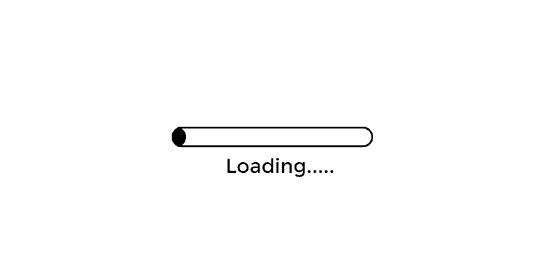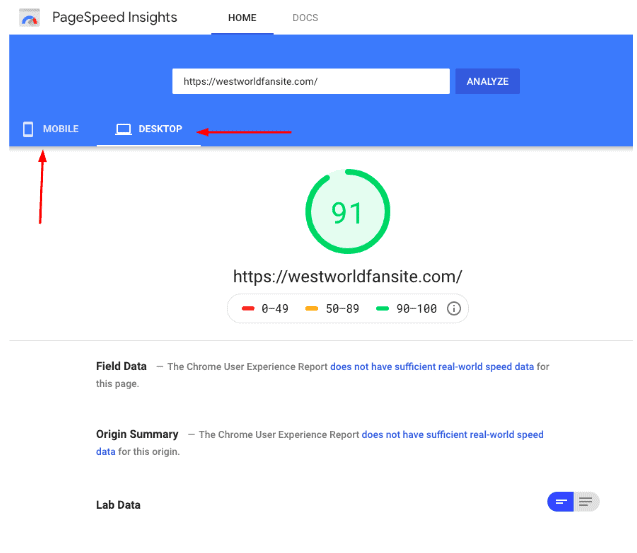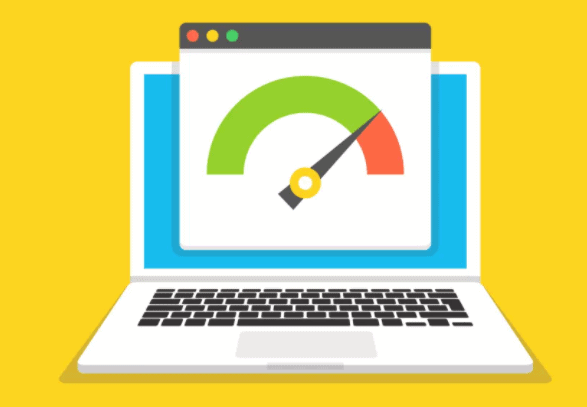There is nothing as annoying as a website that takes too long to load for your visitors. Simply put, a slow website is not entirely effective and fails to make a good impression.
And it is a well-established fact that unhappy customers are the quickest to take their business and patronage to competitors. Now that’s a scary scenario.
Imagine if all the hard work and effort you put into your website – amazing content, appealing graphics, user-friendly layouts, etc. – were to be undermined by something as trivial as your site’s speed!
In today’s world of instant gratification, speed can make or break your website. It affects everything – traffic, page views, conversions, sales, your brand, and your reputation.
Sluggish websites are more common than you would expect. With that in mind, we’re here to help you speed up your website, giving it the edge it deserves.
How To Speed Up A Slow Website Easily In 2025
What is the ideal loading speed?
Before you start stressing over the speed of your website and declare it too slow to propel your business towards success, first check the actual speed of your website.

There are several tools available on the internet that are very simple to use and often, free. They can help you assess yoursite’s loading speed-related performance and even suggest optimizations that will help you speed up.
While the commonly accepted ‘ideal’ loading speed is less than 2 seconds, it is only a rough benchmark. Maybe you can tweak your website to load even faster, right?
But going beyond 2 seconds should ideally be avoided, and if it goes beyond 3-4 seconds, it is a strict no-no. Here are two of the most popular speed-analysis tools that you can use:
Pingdom: Head to their website, enter the URL of your website, and wait for a complete analysis once you hit ‘start test’. It’s as simple as that!
The results are comprehensive, with astonishing insights that deep dive into your website’s overall performance, and point out pressing issues that are making your site slow.
Google PageSpeed Insights: This tool is easy to use and provides a comprehensive report on your site’s loading speed. On entering your site’s URL into the PageSpeed Insights tool, you get detailed analysis about its performance, and issues causing it to slow down.

The tool scores your website out of 100 – and with everything else in life, the more you score, the more your website is optimized.
There are plenty of other sites, tools, and services that help you determine your website’s speed. Choose the one that seems best suited for your website, and take the first step towards a superfast website that your customers and visitors will love!
Most Importantly… Don’t Forget To Make A Backup!
Now that you’ve determined what’s causing your website to slow down, you can tweak the backend to ensure a quick, responsive site that delights your visitors.
However, the most critical step at this point is to back up your website before you change anything!
Tweaks and changes are known to cause disruptions and you might end up losing precious data in the process. You can take backups manually or use a specialized plugin like BlogVault that makes the whole process much easier.
Whatever method you use, be sure to keep backups!
Ways To Improve Your Website’s Speed (WORKING)
Even though your speed analysis will give you a fair idea of what’s making your website sluggish, here are a few universal ways to speed up your site and improve your user experience significantly.
1. Upgrade your web hosting plan:
There are the 3 most popular hosting services – shared hosting,managed hosting and VPS hosting. All 3 hosting services offer different types of speed. As the name suggests, shared hosting is where a number of websites are hosted on the same server. Crowded servers will have an impact on your site’s performance.
Resources are limited. As a site grows and attracts more and more traffic, it’ll draw more resources causing downtime for other websites on the same server.
This is why site suspension is quite frequent in websites hosted on shared hosting. Resources are limited. As a site grows and attracts more and more traffic, it’ll draw more resources causing downtime for other websites on the same server.
This is why site suspension is quiet frequent in websites hosted on shared hosting. Better move to managed or VPS hosting because they offer resources that meet the need to the website. The cost is more than shared hosting but it’s worth it.
No matter how optimized your website is, it will only be as fast as your web hosting service allows! Your site is bound to slow down as your website evolves and grows with more pages and content.
If this sounds like your case, then consider upgrading your web hosting plan. Many service providers will give you a free limited-period trial.
Try it out and see how much the speed improves before you make your decision because there will definitely be a price premium involved in upgrading.
Attention : Use Coupon : BLID10OFFBV To Get 10% Off on Each Blogvault Plans
2. Enable browser caching:
Browser caching can have a significant impact on your website’s loading speed. Caching works by ‘remembering’ the resources required to load your website for a returning visitor.
This data is taken from previous instances, effectively reducing the time needed to reload when revisiting a website. Moreover, your server will use fewer resources to serve the page to the visitor which will put less strain to your server.
Of course, please note that this works for, and will benefit, only repeat customers.
Caching can be enabled at different levels –
Server-level caching: Web hosts handle server-level caching. They enable it on your server without you having to raise a finger. If you move your website to managed hosting services like Kinsta, WP Engine, they’ll have caching enabled on your site.
Caching plugins: There are free as paid caching plugins that you can opt for.WP Rocket s a really popular premium caching plugin. Cache Enabler and W3 Total Cache are free alternatives you can go for. These plugins are effective and easy to use.
It’s worth noting that you’ll face issues with some websites like membership sites. This is because membership sites have dynamic pages like the check out page and discussion boards.
Where common caching techniques fail, object caching comes into the play. Managed hosting like WPEngine and Kinsta offer object caching services that you can utilize.
3. Optimize images:
You might be tempted to use the highest-resolution images for your website. While they do look stunning, they also take up a lot of the bandwidth and use a lot of your server’s resources.
This, in turn, slows your website down. Fortunately, the remedy to this is not low-resolution, pixelated images! There are a number of things you can do to ensure that the images on your website are not causing it to slow down.
From the type of image to the file size, everything has to be measured.
Generally, you’ll find images in 3 types of formats – JPEG, JPG and PNG. A rule of thumb is to avoid PNG because they tend to be much larger than the other image formats.
You can compress the images to reduce their size. Tools like Shortpixel, Compressor.io will help you do that but be mindful of the type of compressor you are choosing. Two types of compressions to go for – lossy and lossless.
While lossy significantly reduces the size of the image, it also reduces the image quality. Lossless, on the other hand, allows you to compress your images without losing quality, so your customers get the same stunning images without the painfully slow loading experience.
It’s recommended that the size of the image should be below 100kb. Crop and reduce the size of images as much as you can. For instance, if you have a post with a lot of screenshots of a product, you don’t need to show users the entire window.
Simply take a screenshot of the part of the product that you want the reader to notice.
4. Remove unnecessary plugins:
While certain plugins are necessary for your website as they make the experience better for your visitors, they also fall in the category of “too much of anything is a bad thing.” Every plugin you add will use some resources to function.
The more plugins you use, the more will be the required resources and consequently, the higher will be the load on the server.
For instance, a security plugin that carries out processes like scanning on your server is using the resources of your server. Many backup plugins store a copy of a backup on it’s your site server.
This means the webserver has to take up the burden of running a security plugin, storing backups along with running its daily processes.
This is a recipe for disaster as it can not only slow down your website but also cause it to crash! Only use the plugins you absolutely need. A minimalistic approach that focuses on quality rather than quantity would work wonders for you.
Every time you want to use a plugin, find out how the plugin impacts a site’s performance.
Take a look at the reviews or query the developers. Test page speed before using the plugin and after installing the plugin.
But what about the plugins that are already present on the site? To figure out which plugin is causing problems for the site, use QueryMonitor.
It’s won’t tell you right away what plugin is causing the issue but it does offer data that you can dig in and interpret. Here’s a good article that can assist you with the process.
5. Check for Malware:
Sometimes the main reason behind your website’s slow loading behaviour is malware. Your websites could be hacked and your folders infected with malware. Too many unwanted files bogs down your website.
Moreover, the presence of malware on your website means your site has been hacked. Your resources are being utilized by an outsider without your knowledge.
Perhaps he is using your site’s to send spam mail. Many he’s storing pirated films and software adding more and more load to your server causing it to slow down.
Malware could cripple your website, compromise security, and put you and your visitors at considerable risk. You could lose the content and even customer data – bringing your worst nightmares to life.
Thankfully, there are several reliable plugins like MalCare built solely for this purpose; they not only clean up an infected site but also protect it from future attacks. Better safe than sorry!
6. Disable or limit revisions:
Revisions are backups of your content. Every time you save a post or a page on WordPress, a backup is triggered. Revisions are very helpful to go back and match the content.
But revisions can also slow down your website because the backup of the content is being stored on your server. Overtime all the content accumulated on your server will slow it down.
Although some users prefer deleting all the revisions, we recommend keeping 3 to 5 revisions and deleting the rest. You’d be surprised to find out how old some of the revisions are dated back years.
Also, there are several other ways to speed up your website. You could enable Gzip compression, minimize HTTP requests, enable HTTP Keep-Alive, minify JavaScript and CSS files.
change your website’s theme, reduce external scripts, fix broken links, disable hotlinking, use an enhanced CMS, and optimize your database, among other things.
Irrespective of the option you choose to enhance your website, we hope you prioritize loading speed and work towards optimizing it because that’s the least your customers and visitors expect.
Quick Links
- How to Speed Up WordPress Website in 12 Easy Steps
- ShortPixel Review
- CartFlows Coupons, Discounts
- Shortpixel Adaptive Image Review
- GeneratePress Pricing with Discount
- ShortPixel Coupons, Offers Promo Codes, Discounts
Conclusion | How To Speed Up A Slow Website Easily
You’re done Now! After making every possible change given above in your website don’t forget to test its performance. If your results are the same as before then please empty your page cache from the cache plugin then give a try again on speed checker websites.
Then definitely you will see an updated version of the website’s result
So, here’s the most important ways to speed up a website fast. You can try these ways on your website and see the result on your webpage. It will definitely bring good speed to your website.
Let me know what problem you face while speeding up your website via comment or subscribing to my email list and I will help you to get the best result.
Don’t forget to share this post with all your fans and followers on social media and subscribe to my email list to stay tuned with me. Thanks for having your time.
